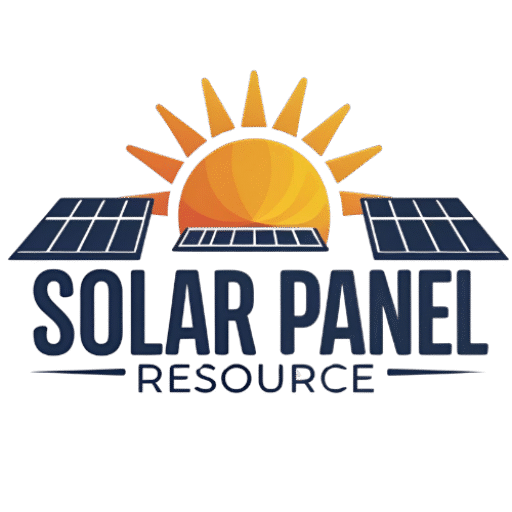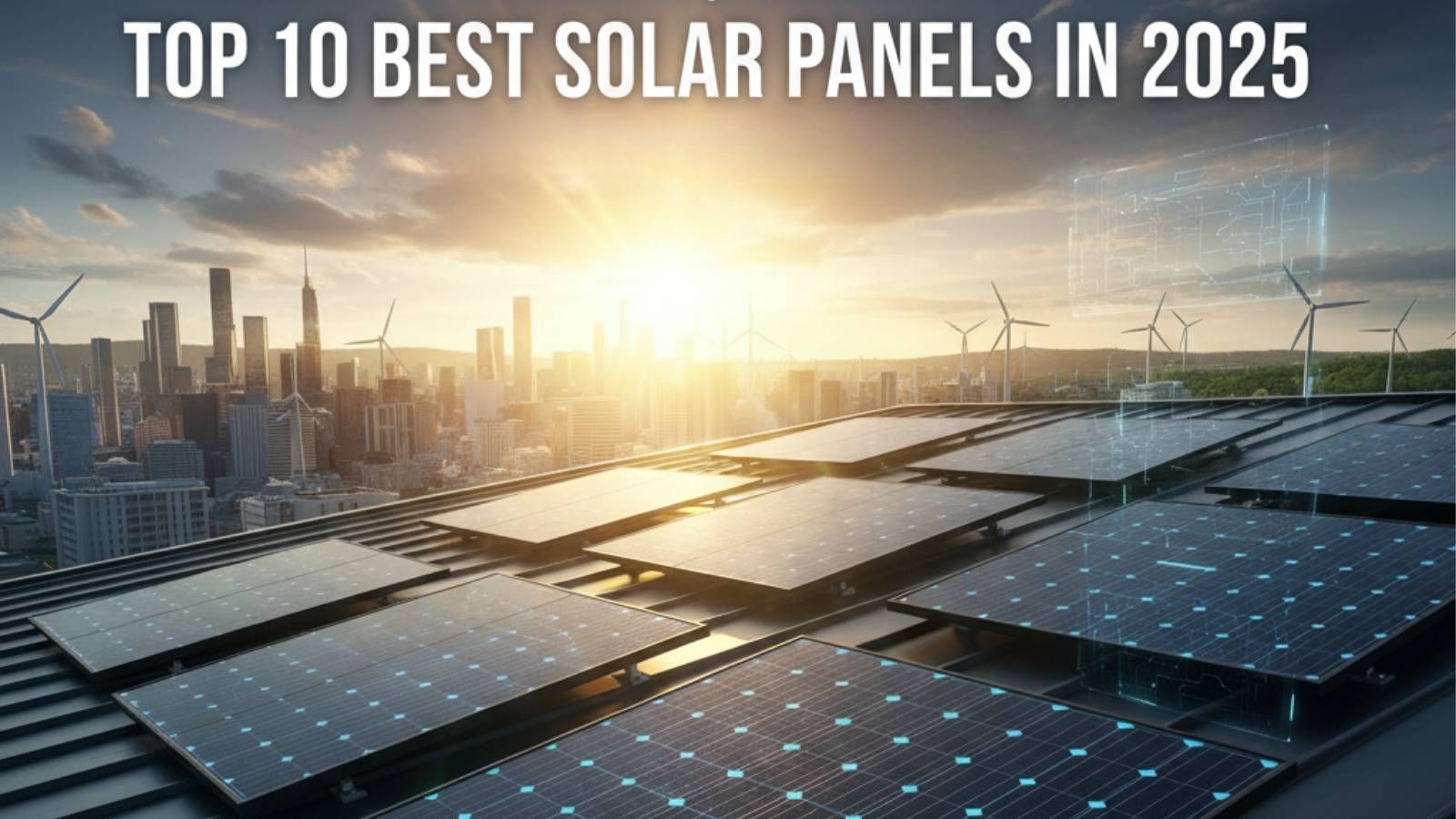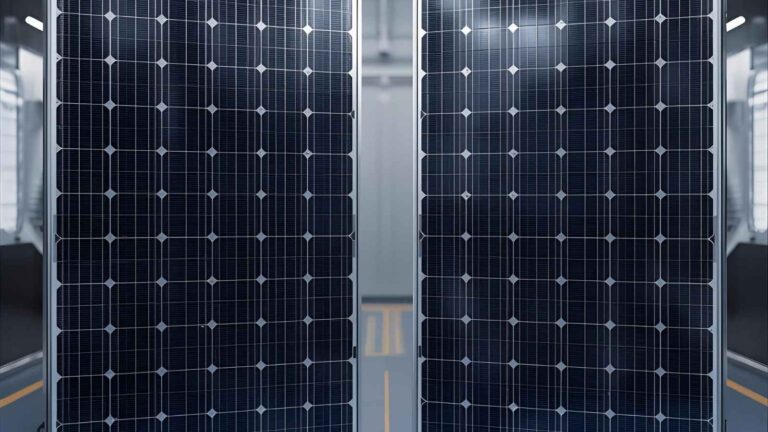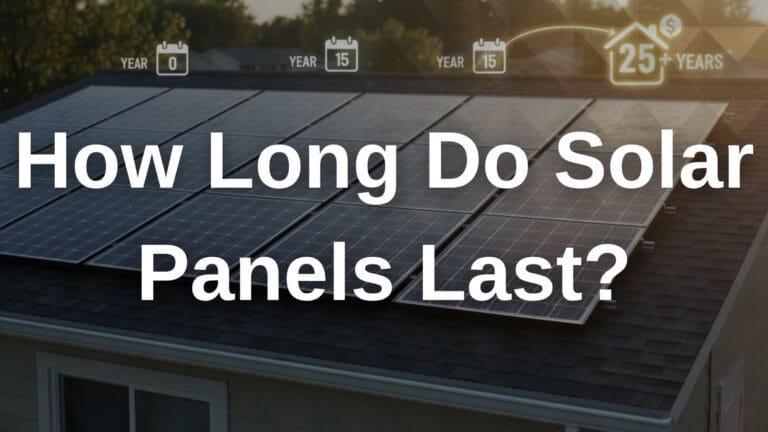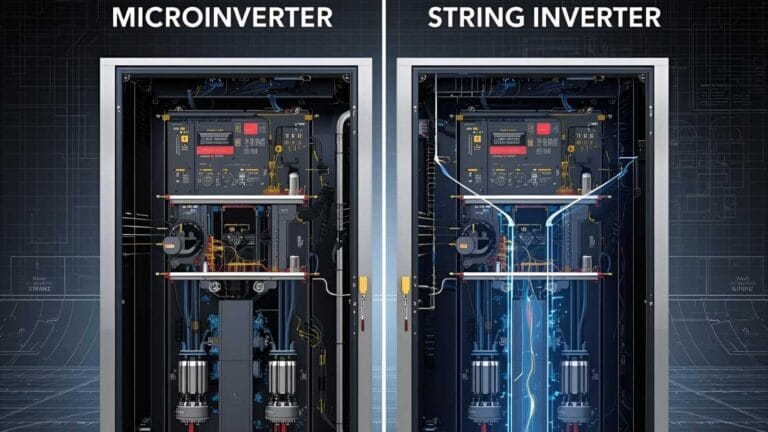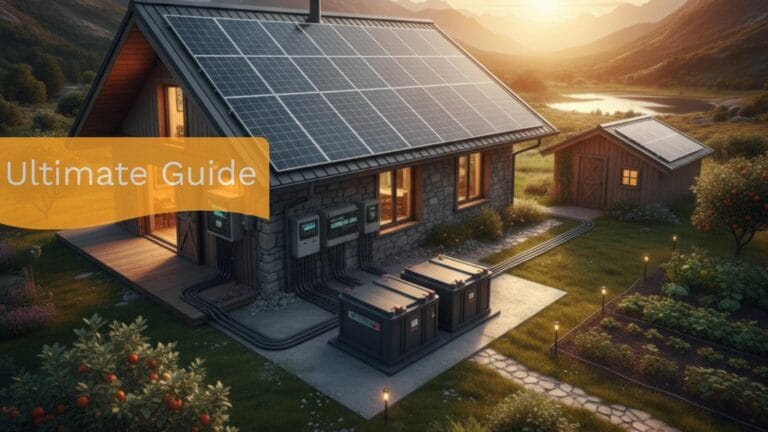Top 10 Best Solar Panels in 2025 (Features, Pros & Cons)
As an Amazon Associate, I earn from qualifying purchases. This post contains affiliate links to products we recommend.
Editor’s Choice for DIY: Most panels on this list are for professional installation. If you want to buy high-quality panels online right now for your home or RV, we recommend Renogy Monocrystalline Solar Panels. Check Price on Amazon
In 2025, the solar industry has officially entered a new era. According to leading industry data from organizations like the International Renewable Energy Agency (IRENA) and BloombergNEF, solar panel technology has hit new benchmarks for efficiency, sustainability, and long-term reliability. We’re seeing lower degradation rates and more robust products than ever before, all while the cost of solar continues its historic decline.
As a solar professional, I believe it’s crucial for anyone—from a homeowner to a project manager—to understand what makes a panel truly great. This isn’t just about a single efficiency number; it’s about a combination of factors that ensure a system performs optimally for its full lifespan.
This comprehensive guide provides an expert-level review of the top 10 best solar panels in 2025. I’ll break down what makes each panel stand out, offering detailed features, verified insights, and an honest look at the pros and cons to help you make the best decision for your needs.
Why Choosing the Right Solar Panel Is Essential
Investing in solar panels isn’t just a purchase; it’s a long-term commitment. Solar modules are engineered to be on your roof for 25 years or more, so the choice you make today will directly impact your energy yield, maintenance costs, and the overall value of your system for decades to come.
As a professional in this field, I’ve seen firsthand how a small difference in panel quality can lead to a significant difference in performance over time. That’s why experts consistently emphasize looking beyond the simple price tag and focusing on key technical and financial factors. The most critical of these are:
- Module efficiency: While an efficiency number might seem small, a difference of even a few percentage points—aiming for ≥21% for premium panels—can mean a lot more power produced from the same roof space.
- Annual degradation rate: All panels lose some efficiency over time. The best panels, however, have a very low degradation rate. A rate of ≤0.3% is preferred, ensuring your system is still producing strong power even after 25 years.
- Temperature coefficient: This metric is crucial for anyone in a hot climate. A lower temperature coefficient means your panels will perform better when temperatures rise, preventing a significant drop in power output on the hottest summer days.
- Manufacturer reliability: A panel is only as good as the company that stands behind it. A manufacturer with a proven track record, a strong warranty, and a robust service network is essential for long-term peace of mind.
- Sustainability: As consumers become more environmentally conscious, the sustainability of a panel’s manufacturing process and the availability of recycling programs are becoming key factors in the decision-making process.
Myths and Facts About Solar Panels

As solar energy becomes more popular, so do the myths surrounding it. These misconceptions often lead to confusion and can even prevent people from investing in a powerful, sustainable solution. Based on my experience and industry research, let’s clear up some of the most common myths about solar panels with straightforward facts.
Myth 1: Higher Wattage Always Means Better Performance
Fact: While a higher wattage number on a panel might look impressive, it doesn’t always guarantee superior performance. The panel’s output in the real world depends on a lot more than just its nameplate wattage. Factors like cell technology, overall build quality, and the specific installation design all play a massive role. A panel with a slightly lower wattage but a better temperature coefficient will perform much better on a hot, sunny day, for instance. It’s a bit like a car’s horsepower; a high number is great, but it doesn’t mean much if the car isn’t built to handle corners well.
Myth 2: Solar Panels Are Not Recyclable
Fact: This is one of the most persistent myths, but the reality is that the solar industry is actively embracing a circular economy. Leading brands and manufacturers are already complying with strict recycling standards and offering take-back programs. The recycling process recovers valuable materials like glass, aluminum, silicon, and copper for reuse in new products. The International Renewable Energy Agency (IRENA) has published extensive research on this topic, confirming that the technology and infrastructure for recycling are already in place and are rapidly expanding globally. So, those end-of-life panels won’t just end up in a landfill.
Myth 3: Panels Lose Most of Their Efficiency After a Few Years
Fact: This myth is based on outdated information. Today’s high-quality, Tier-1 panels are incredibly durable and built to last. While all panels experience a slight decline in efficiency over time, this degradation is very minimal and predictable. Reputable studies consistently show that modern panels retain over 85% of their initial capacity after 25 years. In fact, many manufacturers offer warranties guaranteeing this level of performance. This longevity is a key reason why solar is considered such a solid, long-term investment.
Key Features to Evaluate in 2025

In an industry filled with marketing claims, how do you know if a solar panel is truly high-quality? The answer lies in third-party validation and technical specifications that go beyond the basic efficiency number. Independent laboratories and sector experts consistently recommend that professionals and consumers alike look for a few key factors to ensure a panel will deliver on its promise.
First and foremost, check for certifications. Certifications such as IEC 61215 and IEC 61730 are a panel’s passport to the global market, proving it has passed rigorous tests for safety and performance under various environmental stresses. Another critical factor is the warranty. While a 25-year performance warranty is standard, top-tier panels now offer extended product and performance warranties of 25–40 years, signaling the manufacturer’s confidence in their product’s longevity.
Beyond the basics, you should consider a panel’s real-world performance. Look for a panel with superior shading tolerance and strong low-light performance, as these features ensure your system generates power even on cloudy days or when a stray shadow falls on a panel. Lastly, a panel’s resistance to potential induced degradation (PID) is a crucial, yet often overlooked, factor. PID is a long-term issue where a voltage leak can cause a significant drop in power output. Choosing a panel with high PID resistance protects your investment from this slow and silent killer.
For a deeper dive into these standards, I recommend consulting resources from trusted third-party certifiers like TÜV Rheinland, which you can find at the provided reference link.
Top 10 Best Solar Panels in 2025: A Professional’s Guide
As a solar energy consultant, I get asked all the time about which solar panels are the best. The truth is, “best” depends on a lot of factors, from your budget to your specific rooftop and even your local climate. However, based on extensive industry data, performance tests, and expert analysis, we can identify a clear list of top-tier solar panels that stand out in 2025. This list prioritizes not just efficiency, but also real-world performance, long-term reliability, and overall value. Here are the top 10 solar panels you should be considering for your next project.
1. SunPower Maxeon 7
Efficiency: 22.8%
Why it’s a top pick: SunPower has long been the gold standard for residential solar, and the Maxeon 7 series continues that legacy. Its innovative design minimizes the impact of cell damage and temperature, leading to exceptional real-world performance. The panel’s industry-leading **40-year warranty** and a guaranteed low degradation rate (0.25% per year) give homeowners an unparalleled level of confidence in their investment. The main trade-off is the premium price, but for those who want the best performance and longest warranty on the market, the cost is justified.
2. REC Alpha Pure-R
Efficiency: 22.3%
Why it’s a top pick: REC’s Alpha Pure-R stands out for its unique **Heterojunction Technology (HJT)** and a truly sustainable, lead-free design. This panel is a favorite among installers for its elegant aesthetics and high power output, even in low-light conditions. The company’s strong commitment to sustainability is a major selling point for environmentally conscious consumers, but you might have to check with your installer about its availability, as distribution can be limited in certain markets.
3. LG NeON R Prime
Efficiency: 22.1%
Why it’s a top pick: Despite a recent scaling back of its global distribution, LG’s solar technology remains highly respected. The NeON R Prime, with its N-type cells and solid track record, offers proven long-term reliability and excellent low-light performance. If you can find it through a local supplier, it represents a high-quality, high-performance option that has stood the test of time.
4. Jinko Solar Tiger Neo N-Type
Efficiency: 22.0%
Why it’s a top pick: Jinko Solar is a global powerhouse, and the Tiger Neo N-Type is a perfect example of why. Utilizing **TOPCon technology**, this panel delivers premium efficiency at a highly competitive cost-performance ratio. It’s an ideal choice for projects where budget and performance are equally important. Its main drawback is a slightly higher temperature coefficient compared to more premium brands, meaning its efficiency may dip a bit more on extremely hot days.
5. Trina Solar Vertex S+
Efficiency: 21.9%
Why it’s a top pick: Trina Solar’s Vertex S+ series is a workhorse, known for its robust design and reliability in both residential and commercial settings. It’s one of the most widely deployed panels globally, a testament to its consistent performance and a solid warranty. Just be sure to confirm the specific warranty terms, as they can differ slightly depending on your region.
6. Canadian Solar HiHero
Efficiency: 21.8%
Why it’s a top pick: A leader in sustainability, Canadian Solar’s HiHero series combines high efficiency with a strong ethical manufacturing profile. The company’s wide distribution network also makes these panels easy to source for projects of all sizes. While its performance is top-notch, its aesthetics are slightly less uniform than some of the premium all-black competitors, which may be a consideration for some homeowners.
7. Qcells Q.TRON Series
Efficiency: 21.7%
Why it’s a top pick: Qcells has a well-deserved reputation for engineering excellence. The Q.TRON series features superior shading tolerance, meaning even if a portion of the panel is shaded, the rest can still produce power effectively. The company’s strong support infrastructure and U.S.-based manufacturing also add to its appeal. The main consideration is the slightly larger panel size, which may not fit every rooftop layout.
8. LONGi Hi-MO 7
Efficiency: 21.6%
Why it’s a top pick: LONGi is the world’s largest solar manufacturer, and the Hi-MO 7 series represents its commitment to delivering high-performance, affordable panels. This panel is an excellent option for large-scale projects and homeowners who prioritize a low initial cost without sacrificing significant efficiency. The trade-off is a slightly higher degradation rate compared to premium brands, but the lower cost often makes up for this over the panel’s lifespan.
9. Panasonic EverVolt HK Black
Efficiency: 21.6%
Why it’s a top pick: Panasonic’s EverVolt HK Black series is a top performer, especially in high-temperature conditions. Its unique design minimizes heat-related power loss, making it a perfect choice for hot climates. The sleek, all-black aesthetics are also a major plus for homeowners who prioritize curb appeal. However, it does come at a higher cost than most mid-tier modules.
10. JA Solar DeepBlue 4.0
Efficiency: 21.5%
Why it’s a top pick: JA Solar’s DeepBlue 4.0 has a proven track record in utility-scale installations, a testament to its reliability and solid warranty terms. While its efficiency is slightly lower than others on this list, it represents an excellent value proposition and is a consistent, reliable performer. Its heavier weight, however, may require reinforced mounting structures, adding a potential cost to installation.
Expert Recommendations
Specialists recommend analyzing independent test data from TÜV Rheinland and PV Evolution Labs. Panels with N‑type or heterojunction cells consistently deliver better long‑term performance. Manufacturers with circular economy policies help reduce environmental impact, aligning with modern sustainability standards.
The top 10 best solar panels in 2025 demonstrate the industry’s commitment to higher efficiency, extended warranties, and sustainability. By using verified data and expert advice, professionals can select panels that ensure maximum output and long-term value.
Reference: PV Evolution Labs (PVEL) PV Module Reliability Scorecard
You can also calculate the cost by reviewing our blog post, How Much Do Solar Panels Cost in 2025? (Complete Price Guide).

Solar Energy Enthusiast & Renewable Energy Researcher
Vural’s journey into solar energy began four years ago, driven by frequent power outages and high electricity bills at his own home. He has since gained hands-on experience with both personal and commercial solar projects. At solarpanelresource.com, Vural shares his real-world insights and in-depth research to guide homeowners and business owners on their own path to energy independence.
